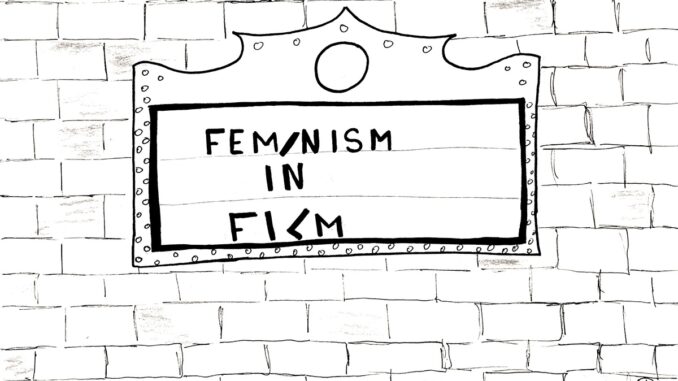
Focusing on feminism is important in film criticism, yet distracts from movies’ other achievements
An audience member can watch a movie and appreciate its entertainment level. However, ever since I took film classes in high school my brain automatically goes to analyzing a film beyond how entertaining it was. When I watch a film there are several things I consider, one of those being how it portrayed its female characters.
There are a few things I look at to help determine whether a film is feminist or has elements of feminism in it: The Bechdel Test, how female characters are objectified and sexualized, who the film crew is (including director, actors and cinematographer) and whether it is just a great film with awesome characters.
First, I think it is important to have a shared definition of feminism and feminist. I respect and love to hear people’s various definitions of feminism. Here is an inclusive, though rather short, definition as I understand it: Feminism is the belief in equity for all genders. A feminist is someone who believes this and may be proactive in building a world that believes and enforces this.
Additionally, film has been around for a long time, which means that it has shifted and changed with society. However, because mainstream American film is produced and distributed by Hollywood’s studio system – historically a very white, cisgender-male-saturated industry – it often carries goals, themes and messaging that align with those identities, even in a film that is supposed to be feminist.
One of these is the objectification and sexualization of female characters, whether subconscious or intentional. This refers not only to how a female character appears visually and how she is filmed, but also to the way in which the female character is portrayed as representing a thing only for the use or pleasure of a male character. In other words, the female character is not important in her own right, but could be replaced with any other female character and the story would still hold. Objectifying and sexualizing a female character, especially when it is through a male character’s eyes, often impacts the audience’s perception of her. This takes the damsel in distress, sex object tropes and helps audience members internalize them and perpetuate them in the real world.
Because Hollywood has been historically driven by white, cis men, marginalized groups were, and still are, excluded from the process of making films. There were female directors at the onset of film, but as the industry developed and became more powerful it also became more male-dominated. However, as society shifts there are more crew members from marginalized groups in the filmmaking process. This brings a critical new lens to the process, creating more realistic, complex characters.
Having a female director or screenwriter can be important to making a film that portrays real-life female characters and their experiences. Unfortunately, what often occurs is that media and critics only discuss the fact that a woman directed the film, and focus on whether the film is a feminist statement. This focus on it being a feminist film, while important, can detract from the other incredible aspects of the film, like the story itself, the cinematography or a particular message that may not be “feminist” but is important.
Why is it “feminist” when a woman directs a woman’s story in film, but just a film when a man directs a woman’s story? Can a film directed by a woman just be a great film? I think it is important to focus on the film as whole, while still considering feminism within the film and its production. Female-led films should no longer be a “feminist phenomenon,” but commonplace. While these aspects may be true, and important to the film, it is equally if not more important for the media, critics and us as viewers to appreciate the film in its entirety.
It is also worthwhile to look at feminism in film because it is critical to portray female characters, and other marginalized gender identities, in all their complexity. When I analyze a movie to determine whether it is feminist there are some basic guidelines I generally use. One is the Bechdel Test, attributed to author Alison Bechdel. This test has three general criteria that a film must meet: at least two women must be present, they must talk to each other and they must discuss something other than a man. This is a great way to determine whether a film might have the potential to be feminist. However, that is not to say that all films that fulfill these criteria are feminist. These are pretty basic requirements, but when I started using the Bechdel Test, I was shocked at how many movies there were that did not fit these criteria.
It is crucial for films to have feminist themes and go beyond simply staying within a box that lacks inclusivity. This can be done by giving traditionally male-held roles to people with other gender identities, filming female characters without objectifying and sexualizing them and telling the story from their point of view.
Another key is for filmmakers to abandon or subvert tropes and stereotypes. It is also important to show non-male characters in all their complexity, and not for the benefit of the male characters themselves. Lastly, depicting real people of any and all genders, and subverting stereotypes surrounding those genders, is not only crucial to a feminist film, but central to exemplifying equity in film to encourage the same in the real world.
Subscribe to the Mossy Log Newsletter
Stay up to date with the goings-on at Lewis & Clark! Get the top stories or your favorite section delivered to your inbox whenever we release a new issue.

Leave a Reply